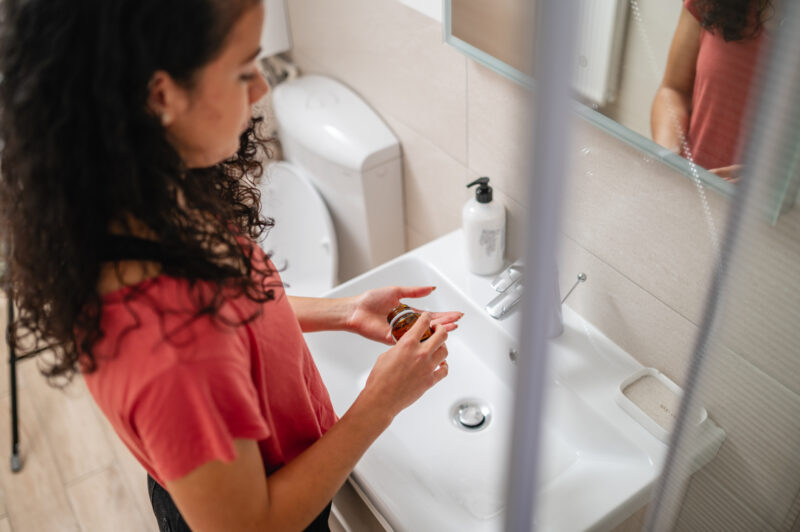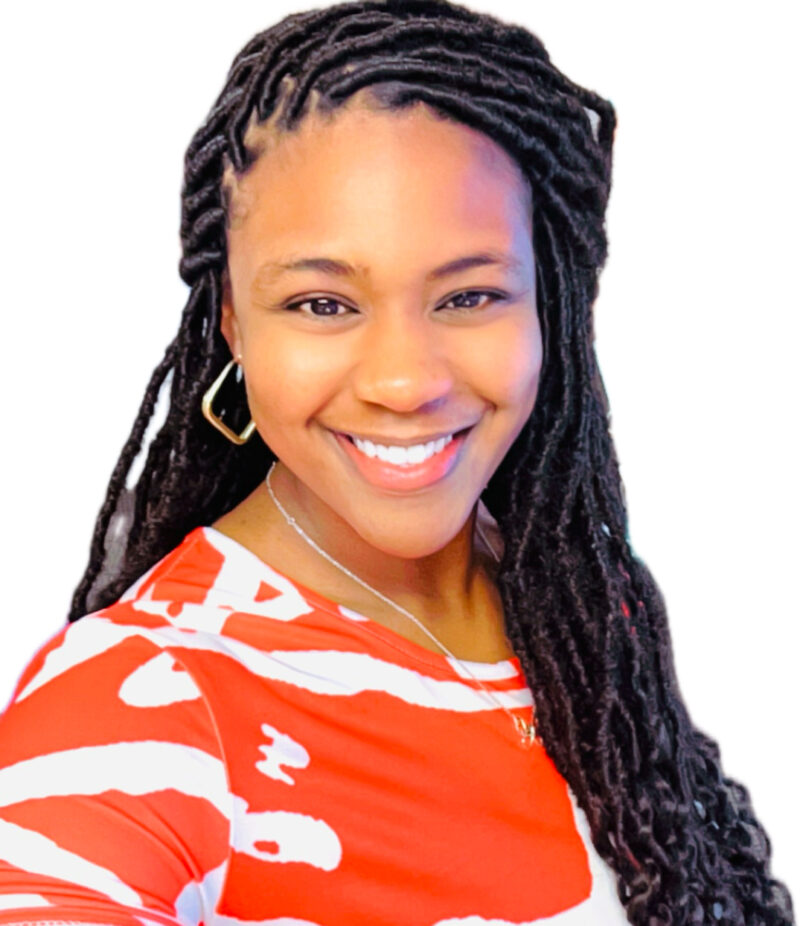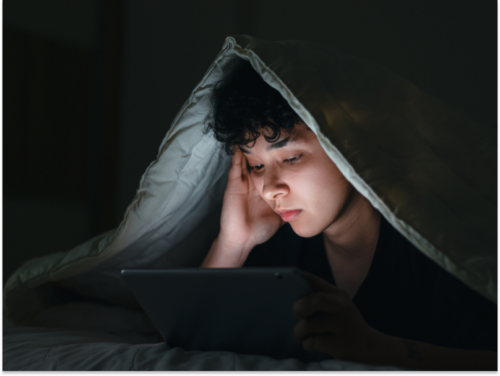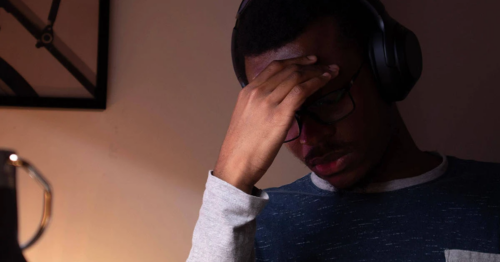
Table of Contents
Considering Propranolol for Anxiety? Read This

Written By: Ashley Laderer

Clinically Reviewed By: Bree Williams
March 4, 2025
6 min.
Should you take propranolol for anxiety? Read on to learn more about using this beta-blocker medication to help your symptoms, according to an expert.
Learn more about our Clinical Review Process
Table of Contents
If you struggle with anxiety, you’ve likely experienced physical symptoms like a racing heart that feels like it’s pounding out of your chest. Maybe you’ve also felt shaky, sweaty, short of breath, or all of the above.
These physical anxiety symptoms can feel debilitating, and the discomfort can fuel more anxiety. Luckily, treatments are available to help relieve these symptoms. One example of a medication used in this case is propranolol, the generic name for Inderal. Read on to learn about taking propranolol for anxiety and other options for anxiety treatment.

We can help you find relief from anxiety
Intensive therapy and medication management, as needed, for anxiety.
Introduction to propranolol for anxiety
Propranolol is a beta-blocker medication. Beta-blockers are mostly used for cardiovascular-related conditions, such as high blood pressure, tachycardia, and arrhythmias. Propranolol is FDA-approved for conditions like these. However, healthcare providers might prescribe propranolol off-label for other indications, including anxiety.
“Propranolol blocks the effects of adrenaline and related stress hormones on the body, which can cause physical symptoms of anxiety like heart racing, shaking, sweating, and shortness of breath,” says Dr. Eli Muhrer, M.D., a board-certified Child and Adolescent Psychiatrist with Charlie Health.
Dr. Muhrer says the medication is most helpful for relieving physical symptoms of anxiety. “As these physical symptoms decrease, it can lead to a person feeling less anxious,” he explains. “It does not directly decrease the mental worry or fear aspects of anxiety.”
While propranolol can be effective in managing the physical manifestations of anxiety, it differs from other medications, such as antidepressants or anti-anxiety medications, that target the cognitive and emotional aspects of anxiety. Unlike these medications, propranolol does not address the mental worry or persistent fear, but it can provide significant relief for people struggling with the physical side of anxiety.
When is propranolol prescribed?
“Propranolol is most helpful ‘as needed’ for specific situations when it is predicted there will be intense physical symptoms of anxiety,” Dr. Muhrer says. “Think of it as a medication for specific situations and not for everyday anxiety.” Dr. Muhrer says some examples of these situations are:
- Public speaking
- Performance anxiety
- Stressful social situations
- Flying on a plane
- Going to the dentist
It’s important to note that propranolol has no FDA approval for any anxiety disorder. “It is not a first-line treatment for anxiety.” Dr. Muhrer says. “It’s not routinely recommended for chronic anxiety disorders.” While the medication isn’t FDA-approved for anxiety disorders, it is commonly prescribed off-label because of its effectiveness in alleviating the physical symptoms of anxiety, such as rapid heart rate and shaking, making it a helpful tool when used in conjunction with other treatments.
Propranolol is often prescribed alongside other anxiety medications to target both physical and cognitive anxiety symptoms. Since propranolol is used “as needed” for situational anxiety, it’s helpful as an add-on medication to daily medication, such as an antidepressant that is typically used for anxiety disorders, says Dr. Muhrer.

What is the typical propranolol dosage?
Since propranolol is not FDA-approved for anxiety, there are no specific guidelines for dosing.
Dr. Muhrer says providers typically start with a dose of 10 milligrams as needed. If this dose isn’t effective, the provider might prescribe a higher dose. However, dose increases should happen slowly to reduce the risk of side effects. Since it’s actually a blood pressure medication, Dr. Muhrer says potential side effects include:
- Lightheadedness
- Dizziness
- Low blood pressure
- Low heart rate
Other medications for anxiety treatment
If a beta-blocker like propranolol isn’t the right fit to treat your anxiety, there are various other medications that can reduce symptoms of generalized anxiety disorder (GAD), social anxiety disorder (SAD), and panic disorder. Some commonly used anxiety medications include:
1. SSRI and SNRI antidepressants
Antidepressants known as selective serotonin reuptake inhibitors and serotonin and norepinephrine reuptake inhibitors (AKA SSRIs and SNRIs) are FDA-approved first-line medications for chronic anxiety disorders. “They can help reduce both physical and psychological symptoms of anxiety over time when taken daily,” Dr. Muhehr says.
These daily medications take a few weeks to start working. Under the direction of your provider, you will start on a low dose to reduce the risk of side effects and then work your way up to a therapeutic dose. You might not see any clear results until six to eight weeks after a specific dose. Examples of common SSRIs for anxiety are:
- Fluoxetine (Prozac)
- Sertraline (Zoloft)
- Paroxetine (Paxil)
- Citalopram (Celexa)
- Escitalopram (Lexapro)
Examples of common SNRIs for anxiety are:
- Duloxetine (Cymbalta)
- Venlafaxine (Effexor)
2. Buspirone (BuSpar)
Buspirone is an anti-anxiety medication specifically indicated for generalized anxiety disorder, Dr. Muhrer says. A provider may prescribe BuSpar as a second-line treatment if SSRIs and/or SNRIs are ineffective. Or, BuSpar can be prescribed as an add-on to an SSRI or SNRI. This medication is taken daily in divided doses.
3. Hydroxyzine
Hydroxyzine is another FDA-approved anti-anxiety medication. It is an antihistamine that has a sedative effect. You can take this medication daily or as needed. Your prescriber will determine which is best for you.
4. Benzodiazepines
Benzodiazepines are a class of sedative medications. “They can quickly relieve intense anxiety or panic attacks by calming the nervous system,” Dr. Muhrer says.
Examples of benzodiazepines for anxiety management are:
- Alprazolam (Xanax)
- Clonazepam (Klonopin)
- Diazepam (Valium)
- Lorazepam (Ativan)
“However, they can cause drowsiness and lead to dependence, tolerance, and withdrawal,” Dr. Muhrer says. “With regular use, that can be dangerous.” Due to these risks, doctors typically only provide them sparingly and for short-term use.
Therapy for anxiety
On top of medication, therapy plays a crucial role in anxiety treatment. Medication can help lower your overall baseline of anxiety, allowing you to better practice coping skills and learn techniques to lessen your anxiety. For many people with anxiety, a combination of medication and therapy gives the most effective, long-lasting results. Some examples of therapy for anxiety are:
1. Cognitive-behavioral therapy (CBT)
CBT is a first-line therapy modality for treating anxiety disorders. It helps you identify cognitive distortions –– maladaptive thought patterns that are contributing to your anxiety. For example, you might catastrophize and always expect the worst, or you may look at things in a black-and-white or all-or-nothing manner. CBT can help you challenge these unhelpful thought patterns and develop healthier, more helpful ones.
2. Exposure therapy
Exposure therapy is a form of CBT. It can be used for people with phobias or even panic disorder. Interoceptive exposure is especially helpful for people with panic disorder. People who get panic attacks often fear having another panic attack and the intense symptoms that come along with it. With interoceptive exposure, your therapist will expose you to these feared sensations to help you become more desensitized to them. For example, they might have you run in place to increase your heart rate or to hyperventilate on purpose.
3. Acceptance and commitment therapy (ACT)
ACT is an acceptance and mindfulness-based therapy. An ACT therapist will help you learn to accept your anxiety thoughts and experiences rather than fight them. ACT recognizes that trying hard to push anxiety symptoms away can end up making them even more intense. The goal is to mindfully notice these unwanted anxiety symptoms without judgment and live a life in line with your values.
4. Dialectical behavior therapy (DBT)
DBT is a skills-based form of therapy that helps you tolerate distress and regulate tough emotions. DBT programs typically include individual therapy, skills training, and supported groups. You’ll learn useful DBT skills like distress tolerance, mindfulness, emotional regulation, and interpersonal effectiveness.

Anxiety treatment at Charlie Health
If you’re struggling with an anxiety disorder, Charlie Health is here to help. Charlie Health’s virtual Intensive Outpatient Program (IOP) provides more than once-weekly mental health treatment for people and families dealing with serious mental health conditions, including generalized anxiety disorder, panic disorder, social anxiety disorder, and more.
Our compassionate clinicians incorporate evidence-based therapies into individual counseling, family therapy, and group sessions. We also offer medication management to clients as needed –– potentially including propranolol for anxiety. With this kind of holistic treatment, managing your anxiety is possible. Fill out the form below or give us a call to start your journey to anxiety relief today.
References
https://www.ncbi.nlm.nih.gov/books/NBK532906/
https://www.mayoclinic.org/diseases-conditions/depression/in-depth/ssris/art-20044825
https://www.mayoclinic.org/diseases-conditions/depression/in-depth/antidepressants/art-20044970
https://www.ncbi.nlm.nih.gov/books/NBK531477/
https://my.clevelandclinic.org/health/treatments/24570-benzodiazepines-benzos
https://www.apa.org/ptsd-guideline/patients-and-families/exposure-therapy




